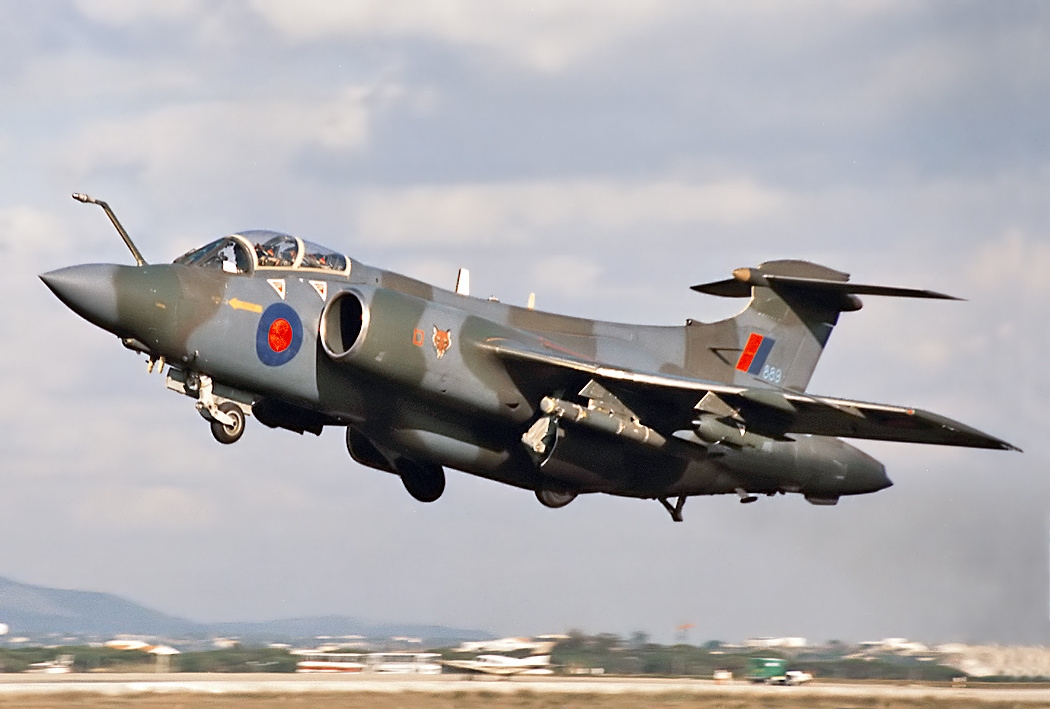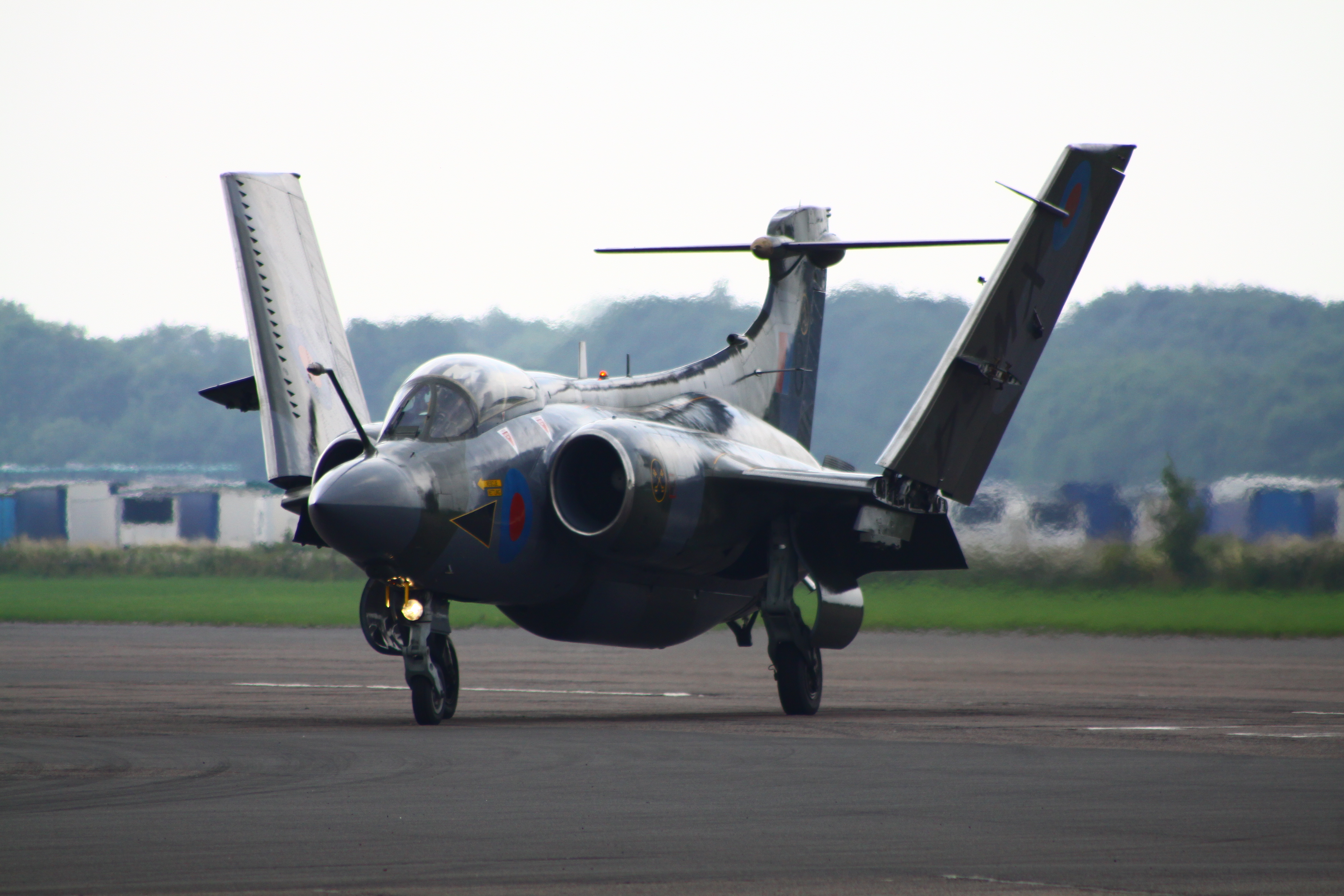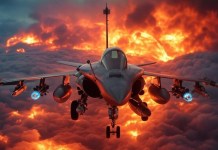The Blackburn Buccaneer was a subsonic carrier-capable fighter jet, which served with the British Royal Navy (RN) and later with the Royal Air Force (RAF) until its retirement in 1994.
Recently, a software tycoon had to shell out a whopping £88,000 ($116,608) to own one of the Buccaneer planes, according to The Sun.
The Buccaneer was designed and produced by the British aircraft manufacturer Blackburn Aircraft. The company was later known as the Hawker Siddeley Buccaneer after its merger with the Hawker Siddeley group.
The Buccaneer was originally procured by the Royal Navy as a naval strike aircraft capable of operating from aircraft carriers. The aircraft was introduced to the service in 1962 as a response to the advancements made in the Soviet Navy at that time.
Buccaneer was also capable of delivering nuclear weapons as well as conventional munitions as part of anti-shipping warfare. The aircraft was active in the North Sea area for the most part of its service.
In the initial production stages, the aircraft faced a series of accidents due to poor engine power. To overcome this issue, the Navy soon introduced the Buccaneer 2.0 which was equipped with more powerful Rolls-Royce Spey engines.

While the RAF was initially not interested in procuring the Buccaneer as they were more in favor of the BAC TSR-2, it later agreed to procure the Buccaneer as a substitute of TSR-2 and its replacement, the F111K was canceled.
The Royal Navy’s Buccaneers were transferred to the RAF after it had retired the last two of its large aircraft carriers. These aircraft were also procured by the South African Air Force in 1965.
The Buccaneer was a mid-wing, twin-engine monoplane with the capacity for a two-person crew in a tandem seat arrangement. During its years of service, the aircraft had to regularly fly at sea level in order to avoid radars and enemy defense systems. The aircraft was often involved in long-range missions operating from both aircraft carriers as well as shore bases.
The warplane had an all-weather flying capability owing to the extensive electronics which were built for navigation and fire-control functions. The Buccaneer was one of the largest aircraft to operate from British aircraft carriers and it continued operating from them till the last conventional aircraft carrier was withdrawn from service in the year 1978. The Buccaneer was known to be the Royal Navy’s backbone in ground strike operations, including the critical nuclear strike mission.
The Buccaneer’s Weapons
The Buccaneer was mainly developed as a maritime nuclear strike aircraft. Initially, the Buccaneer was supposed to be armed with a nuclear air-to-surface missile codenamed Green Cheese. However, this was canceled, and instead, the aircraft was equipped with the unguided 2,000 lb (907 kg) Red Beard tactical nuclear weapon.
The Red Beard had an explosive yield between 10-20 kiloton and was mounted onto a special bomb bay door, into which it fitted perfectly and ensured that there was no aerodynamic buffet on the launch aircraft.

The bomb bay door was also capable of accommodating a 2000 liter auxiliary fuel tank and a photo-reconnaissance ‘crate’ or a cargo container. The reconnaissance package had an arrangement of six cameras, each pointing at different angles or with different imaging properties. This was installed on the aircraft only when it was deployed for missions involving reconnaissance activities.
The internal area of the aircraft’s rear fuselage was mostly occupied for storing the electronics, including many parts of the radio, radar equipment, and also the crew’s life oxygen support system. The aircraft was made easier to control and land with the help of an integrated flight control computer which was capable of performing auto-stabilization and auto-pilot functions.
Millionaire Owns A Buccaneer
The Buccaneer jet caught software tycoon David Hamilton’s eye when he saw the aircraft being put on sale on Gumtree in August this year after the land on which the aircraft had been placed was sold off. Hamilton referred to his purchase of the Buccaneer jet as an “impulse buy during lockdown”.
He had to spend a whopping £28,000 to purchase the aircraft and had to spend an additional £60,000 to get it transported from Elgin, Moray to Cupar, Fife, on the back of a lorry.

Hamilton had to spend this money in order to pay for the police escorts and also for the removal of road and traffic signs for what turned out to be a huge operation. The millionaire said, “I jump into these things with two feet. I liked the look of the jet but didn’t give a moment’s thought to how I was going to get it moved”.
“I definitely didn’t think it would cost me the same amount of money again. But I don’t regret it at all. It will be worth it in the long run”, he was quoted as saying by The Sun.
New Home For The Jet
Hamilton and his business partner Gavin Findlay purchased the aircraft for their wildlife park, The Scottish Deer Centre in Cupar, Fife. They collaborated with the RAF Benevolent Fund and have planned to turn the aircraft into a big tourist attraction. Its engine will be put on display and Hamilton hoped that fans, both old and young, will be able to sit in the cockpit.
“I made an awful lot of work for myself. But there was talk of the jet going to Australia. We managed to keep it in Scotland, which is a big deal,” Hamilton said. The jet was previously purchased by Iain Aitkenhead for a “few thousand” after it was taken out of service by the RAF Lossiemouth. He put the aircraft on sale on Gumtree in August after he sold off the land the jet was parked on.
- Written by Kashish Tandon/EurAsian Times Desk
- Contact the author at: kashishtandon21@gmail.com
- Follow EurAsian Times on Google News




